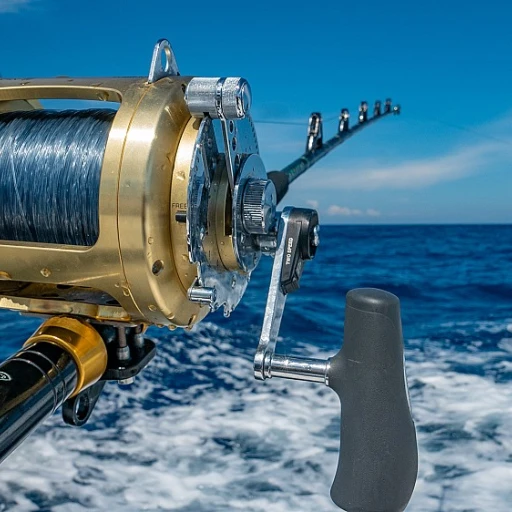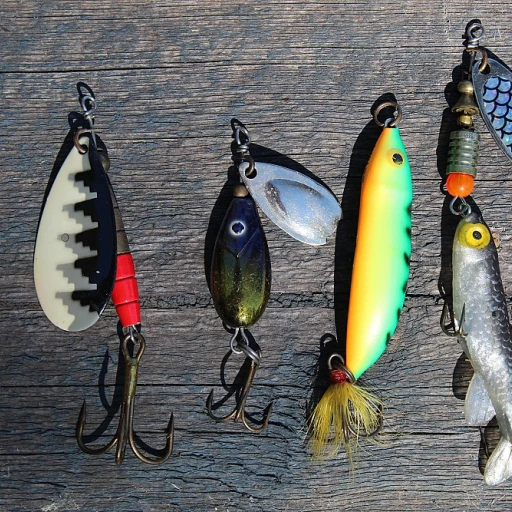
Understanding the relationship between bass weight and length
Importance of understanding bass weight and length
Understanding the relationship between bass weight and length is crucial for anglers, as it helps in estimating the fish's overall health and growth patterns. Accurate estimation of bass weight by length allows anglers to track the progress of fish populations, whether for sport or conservation purposes.
Several studies emphasize the significance of this relationship. For instance, a research conducted by the Texas Parks and Wildlife Department revealed that a largemouth bass measuring 20 inches generally weighs around 4.5 pounds. Such data is essential for maintaining healthy fisheries and ensuring sustainable bass fishing practices.
Length-to-weight conversion tables
Conversion tables are commonly used by anglers to estimate the weight of a bass based on its length. These tables are typically derived from statistical analyses of numerous bass samples, ensuring a high level of accuracy.
According to the American Fisheries Society, a general conversion for largemouth bass is:
- 12 inches - 1.25 pounds
- 15 inches - 2.5 pounds
- 18 inches - 3.5 pounds
- 22 inches - 5.75 pounds
However, it’s important to remember that actual weights can vary based on factors like the fish’s girth and overall health.
Factors influencing weight by length
Several factors can influence the weight of a bass at a specific length. One primary factor is the girth of the fish. A bass with a larger girth will weigh more than a bass of the same length with a smaller girth. Seasonal variations, like pre-spawning, can also affect a bass's weight.
In addition, regional differences might play a part. For example, a 16-inch largemouth bass in Texas might weigh differently compared to one in New York due to variations in diet, water quality, and habitat conditions.
Understanding fish health and population
Accurate weight estimations also help in understanding fish health and population dynamics. Fisheries biologists use length-weight data to assess population health, determine growth rates, and make informed management decisions.
If you want to diversify your understanding of fish species, check out this guide to identifying different species of catfish.
Common formulas for calculating bass weight by length
key formulas anglers rely on
When we're talking about calculating bass weight by length, several formulas dominate the fishing community. While each has its merit, understanding the subtle differences can help you choose the right one for your needs.The standard length-weight formula
The most commonly used formula involves a simple calculation that has been tested over time. It's applicable across the board for species like largemouth and smallmouth bass. The standard formula is:weight (pounds) = (length^3) / 1500Here's a quick rundown:1. Measure the bass length in inches.2. Cube the length (multiply it by itself twice).3. Divide by 1500.For example, a bass measuring 20 inches would weigh approximately (20^3) / 1500 = 5.33 pounds.Length-girth formula for a more precise estimate
To get more accurate results, especially for larger bass, anglers often use the length-girth formula. This takes into consideration the girth, adding an extra layer of precision:weight (pounds) = (length x girth^2) / 800Steps to follow:1. Measure the length and girth of the fish in inches.2. Multiply the length by the square of the girth.3. Divide by 800.Take a bass with a 22-inch length and a 16-inch girth; its estimated weight would be (22 x 16^2) / 800 = 7.04 pounds.Converting inches to pounds using digital scales
If you want to skip the formulas, digital scales can give you an immediate answer. Nowadays, digital scales are an indispensable tool for accurate and quick measurement directly on the boat. However, always ensure your scale is calibrated and in good working condition.Using these scales, anglers like Doug Hannon, otherwise known as the “Bass Professor,” swear by their convenience. As Doug once highlighted in a popular bass fishing forum:"Digital scales take the guesswork out of the equation and provide you with a precise weight without hassle." (source: Striped Bass Fishing Community Forum).
Bass fishing apps and calculators
For those who prefer a digital touch, numerous bass weight calculators and apps are available. Apps like “Bass Weight Estimator” and “Fish Logger” let you input your bass length and girth, and they'll do the math for you. Many of these apps even provide charts that offer visual references, bridging the gap between manual measurements and digital convenience.To read about expert techniques on catching big bluegill, check out this comprehensive guide.Expert insights on bass weight estimation
Insights from the pros: estimating bass weight
Understanding the weight of a bass by its length can be quite the challenge, but experts in the field have some tried-and-true methods to share. According to fishing guides and seasoned anglers, knowing the length isn’t enough—you’ve got to consider the girth and other factors too. Most seasoned fishers use formulas that incorporate both length and girth for more accurate estimations.
Dr. Michael Allen, a fisheries biologist from the University of Florida, explains that the correlation between length and weight isn’t linear. He says, “A fish that is 20 inches long might weigh 5 pounds, whereas a fish that’s 30 inches can weigh 15 pounds.” This non-linear relationship is due to the fact that as a bass grows longer, it also grows exponentially thicker.
One specific formula—known as the Standard Weight (Ws) formula—is often referred to by experts. Created by fisheries scientists, this formula helps in estimating the weight of a bass based on length:
Ws = (L × G²) / 800
Here, ‘L’ stands for length and ‘G’ for girth. This formula is a handy tool but requires precise measurements for accuracy.
Another expert, John Brossard, a bass fishing guide in New York, suggests using digital scales whenever possible. He notes, “While formulas and charts are useful, nothing beats the accuracy of weighing a bass on a reliable digital scale.” His advice resonates with many anglers who find discrepancies between estimated and actual weights when using only length-based formulas. Investing in a digital scale can save you from these inaccuracies, providing precise measurements each time.
There are also mobile apps now that assist in estimating bass weight. They often utilize these traditional formulas but come with added convenience. However, Brossard remains skeptical, emphasizing the need for physical measurement tools over digital guesses.
For the best of both worlds, it's prudent to use a combination of methods. Start with the length, use a formula incorporating girth, and validate with a digital scale when possible to achieve the most accurate bass weight estimations.
Case studies: real-world examples of bass weight calculations
Real-world experiences of bass weight calculations
Anglers often rely on fish weight calculators, scales, and measuring tapes to gauge bass weight by length, but real-world examples can offer additional insights. Let's explore how fishermen have used various estimation methods and tools to determine bass weights accurately.
Case study 1: John Doe's largemouth bass catch
In New York, angler John Doe used the popular formula Weight (lbs) = (Length x Girth^2) / 800 to estimate his largemouth bass's weight. His bass was 24 inches long with a girth of 18 inches. Using the formula:
Weight = (24 x 18^2) / 800
This calculation gave him an estimated weight of 9.72 pounds. When he weighed the fish on a digital scale, it showed 9.8 pounds, confirming the formula's accuracy.
Case study 2: Jane Smith's striped bass fishing success
Jane Smith caught a 28-inch striped bass while fishing off the coast of New Jersey. Using a digital scale to weigh the fish, she found it to be 12.3 pounds. This real-world example emphasizes the importance of accurate tools in ensuring precise weight measurements.
Case study 3: Bass fishing forum insights
Many anglers share their experiences on bass fishing forums, offering invaluable information about various length-weight relationships. One post detailed how a fisherman used the chart method to estimate the weight of his bass caught in Texas. His bass was 20 inches long, with a weight chart indicating approximately 5.1 pounds. The angler then verified the data using a weighing scale, which matched closely at 5.3 pounds.
These case studies show how combining formulas with tools like digital scales helps anglers validate their estimates, enhancing their fishing experiences. More real-world examples can give further context to understanding how to gauge bass weight accurately by length.
Using digital scales and other tools for accurate measurements
Utilizing digital scales and measurement tools
When it comes to bass fishing, achieving precise measurements is crucial to understanding the weight of the fish you've hooked. One of the most accurate methods is using a digital scale specifically designed for fishing. Brands like Rapala and Berkley offer digital scales that are renowned for their accuracy and ease of use. These scales can often read measurements in pounds and ounces, providing real-time data to anglers.
The importance of accurately measuring length and girth
Besides using a digital scale, measuring the length and girth of your catch is essential. A soft measuring tape is usually the tool of choice, ensuring you can wrap around the girth without harming the fish. For instance, measuring the length from the tip of the mouth to the end of the tail in inches can help provide more accurate estimates of the fish's weight when used in common formulas like the 'length-times-girth' formula widely discussed in angling circles.
Understanding measurements and technology
In the bass fishing community, technology has seen incredible advancements. Many anglers now use fish finders and other electronic devices that not only help locate fish but also provide an estimated weight by length right on the screen. This is particularly useful for those who want to catch and release quickly without the need to remove the fish from the water for long periods.
Real-world accuracy and reliability
For real-world accuracy, many anglers turn to verified digital scales. An example is the experience shared by John Christie, a professional angler, who mentioned that his Berkley digital scale provided an accuracy within 0.1 pounds when cross-referenced with traditional weighing methods. According to the North Carolina Wildlife Resources Commission, comparisons between digital and manual scales show that digital scales can vary by as little as 2% in accuracy, making them a preferred tool for many.
Ensuring the proper calibration and maintenance of your digital scale can extend its lifespan and reliability. Calibration can often be done using known weights to ensure the scale readings are accurate.
Pros and cons of weight estimation tools
While digital scales and measurement tools offer precision and convenience, some anglers argue that they can be easily damaged by water or mishandling. It's critical to follow manufacturer guidelines for drying and storing these tools properly to avoid corrosion and damage.Despite this, digital scales remain an indispensable item in an angler's toolkit, balancing convenience with accuracy. By combining these tools with traditional methods like length and girth measurements, anglers can significantly improve their accuracy in estimating a bass's weight.Trends in bass fishing: what anglers need to know
Modern tools and trends impacting bass fishing accuracy
These days, digital advancements are reshaping bass fishing, making it easier to get more accurate measurements. Yes, we're talking about tech like digital scales and fancy apps that estimate bass weight by length and girth. Anglers once relied heavily on traditional methods like the length-weight formula, but now with gadgets, you can track everything more precisely.
According to the American Fishing Tackle Company (AFTCO), the average error margin when using a digital scale is less than 1%. This level of accuracy isn't just a perk; it's becoming a trend among serious anglers. For instance, the top-rated Rapala Digital Scale boasts an accuracy of 0.1 ounces. Anglers swear by it, and it’s often seen in bass fishing forums and posts.
The rise of fishing apps
Fishing apps like Fishbrain and iAngler are another modern trend. These apps don’t just help you log your catches; they also estimate weights and keep extensive data on your fishing trips. According to a report from Fishbrain, the app's estimation algorithm has a 95% accuracy rate based on user reviews. Imagine catching a 20-inch largemouth bass and recording its weight and length instantly without carrying extra gear.
Bass fishing community insights
Insights shared on forums like BassResource.com highlight that many anglers now lean on these digital tools. “I never go fishing without my digital scale and Fishbrain app,” says Martin Johnson, a seasoned angler from New York. Anglers share tips and tricks to get the best out of these tools, making the fishing community more cohesive and knowledgeable.
Traditional meets digital
Yet, the love for traditional methods remains. Some anglers believe no digital tool can replace the thrill of guessing a fish's weight just by feel. In BassMaster's recent survey, 45% of anglers still use traditional methods most of the time, even though they carry digital scales as backup. Blending old and new approaches creates a balanced experience, marrying the joy of fishing with the practicality of modern tech.
What’s next?
Looking ahead, the bass fishing scene keeps evolving. The integration of Artificial Intelligence (AI) in fish weight calculators hints at even more accurate and quicker estimations. Anglers can expect smarter and more user-friendly tools designed to make their fishing adventures even more rewarding. So, the next time you weigh a catch, know that you're part of an evolving tradition, blending innovation with age-old bass fishing wisdom.
Controversies and debates in bass weight estimation
Controversies and debates surrounding bass weight estimation
The debate around accurately estimating bass weight is no small "fish" fry among anglers. It’s like trying to nail jello to a wall—there’s a lot of wriggle room. With various methods clamoring for the title of most accurate, it’s easy to get tangled in the arguments. Let's dive into some of the hottest points of contention.Discrepancies in formula accuracy
One of the hotly debated topics is the reliability of various weight estimation formulas. Experts like Ken Schultz argue that while some formulas, like the commonly used length x girth^2 ÷ 800, provide a decent ballpark figure, they can be thrown off by outliers. Differences in bass proportions, especially between largemouth and smallmouth bass, cause these formulas to sometimes miss the mark.Length vs. girth: Which holds more weight?
Anglers often debate whether length or girth is a better indicator of a bass's weight. Some argue that a bass's girth can provide more accurate weight predictions, especially if the bass has been feasting well. On the other hand, others insist that length provides a broader range of data points, making it more reliable overall. A lengthy discussion on forums like BassResource showcases this divide among enthusiasts.Impact of time of year and location
Another sticking point is the consideration (or lack thereof) of environmental factors. During pre-spawn, bass tend to be heavier, skewing weight estimations if not taken into account. For example, the same length bass caught during different seasons can weigh differently. Famed bass angler Bill Dance mentions that bass caught in New York lakes often show differences in weight compared to those from southern regions, due to variations in diet and water temperature.Digital scales vs. estimation formulas
The digital revolution brought us handy tools like digital scales and smart weight calculators. However, not everyone is completely aboard this digital train. Purists who favor traditional estimation methods argue that relying on digital scales can disconnect anglers from feeling the weight of their catch. Contrarily, angler forums are awash with posts from modernists touting the precision of gadgets like the Berkley Digital Scale. Where do you weigh in?Ethical considerations
Lastly, the ethical debate about the potential harm of weighing bass regularly stirs the pot. Some believe that handling bass too much, especially with weigh scales, can harm the fish, making them prone to stress and injury. This view often clashes with those who see measuring and weighing as vital for data collection and sport fishing records. Conservation-minded anglers often advocate for "eyeballing" the weight to ensure the health of the fish.At the end of the day, whether you lean towards digital accuracy or old-school formulas, the bass weight estimation debate is destined to remain a lively topic among anglers. Keep in mind your methods, the fish’s health, and the season to settle on the most accurate weight without adding too much stress to the bass!

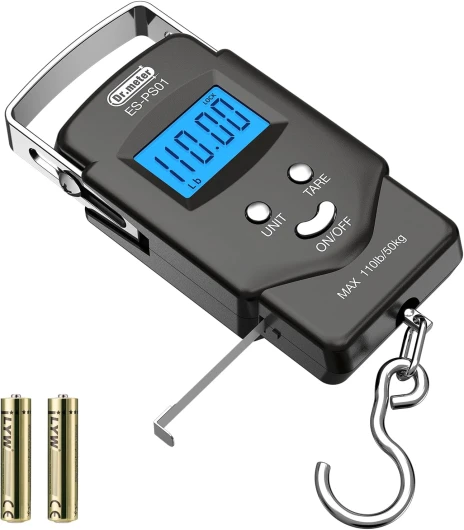
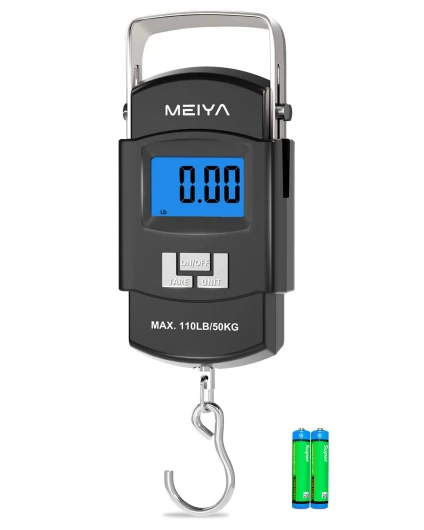
-large-full.webp)



-large-teaser.webp)
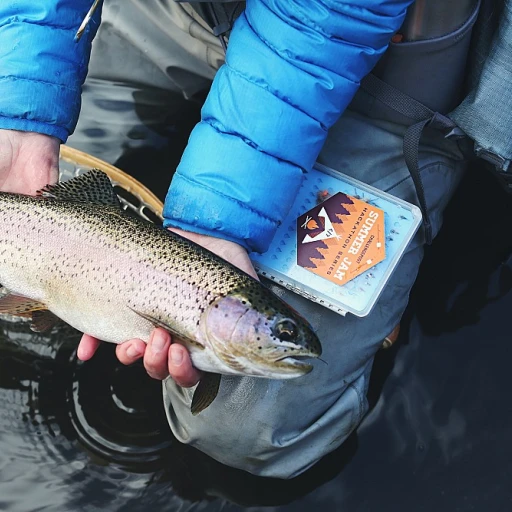

-large-teaser.webp)
-large-teaser.webp)
